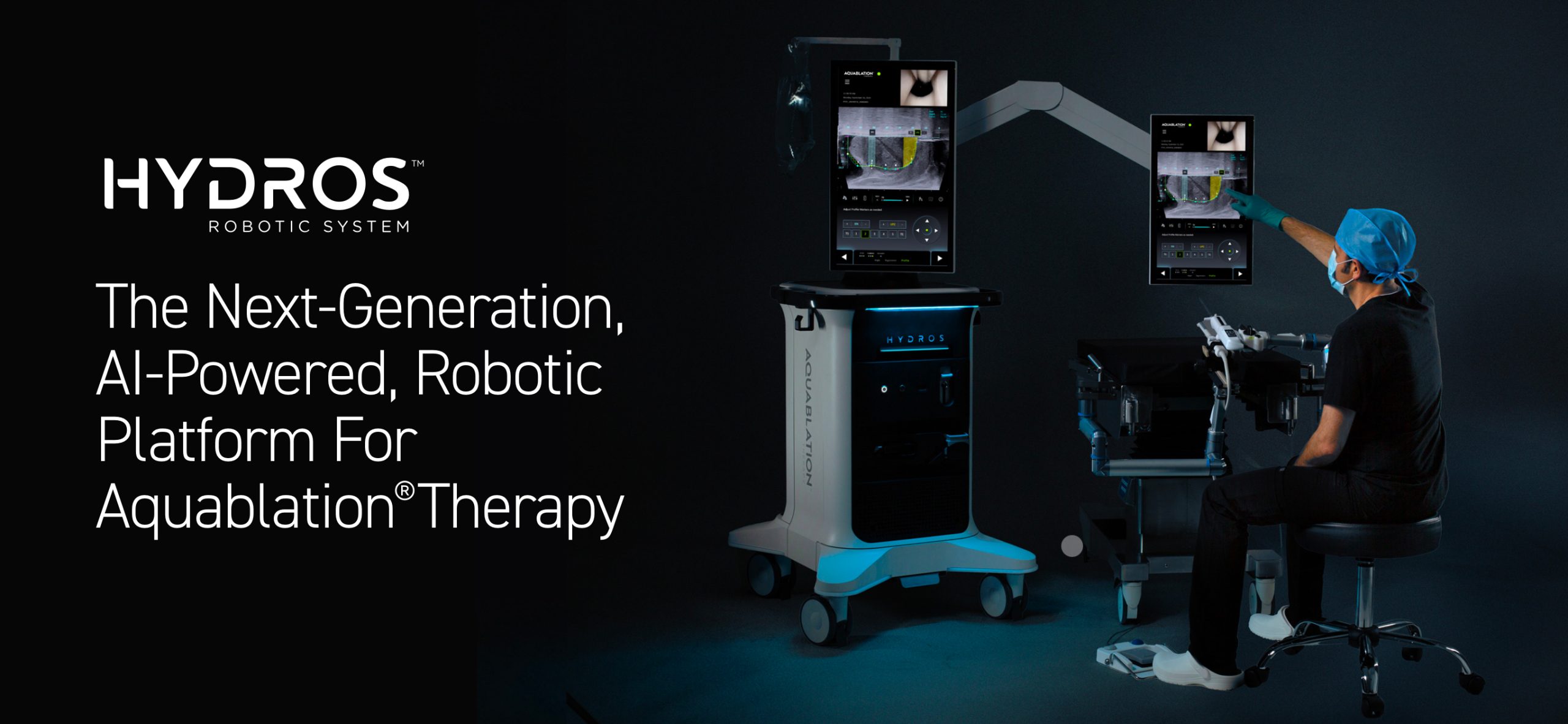What is Aquablation Therapy?
Aquablation therapy uses robotic precision and the power of water to treat BPH. This technology allows for precise, consistent, and predictable removal of prostate tissue, providing long-lasting relief, regardless of prostate size.
How Does Aquablation Therapy Work?
Aquablation is a resective procedure, meaning it surgically removes prostate tissue that causes symptoms. The procedure is minimally invasive, as no abdominal incision is needed; the prostate is accessed through the urethra.
Aquablation is performed under anesthesia in a hospital setting and usually takes less than an hour. Patients typically stay overnight and go home the next day.
There are two key steps to the procedure:
Step 1: Creating a Surgical Map
Each prostate is unique, so Aquablation allows our surgeons to customize the procedure. Using ultrasound imaging combined with a cystoscope (a camera), surgeons can view the prostate in real time. This enables them to map out which areas to remove and which to avoid, ensuring they preserve crucial structures and avoid irreversible complications like erectile dysfunction, ejaculatory dysfunction, and incontinence.
Step 2: Removing Prostate Tissue
Once the map is created, a robotically controlled, heat-free water jet removes the targeted prostate tissue. This technology reduces human error, ensuring precise, consistent, and predictable tissue removal. If needed, minimal cautery may be used to control bleeding.
What Are the Side Effects of Aquablation Therapy?
One of the primary concerns men have about surgery is the risk of side effects. In fact, a recent survey shows that 85% of men worry about incontinence and 4 out of 5 men are concerned about permanent impacts on sexual function.
In clinical studies, Aquablation therapy has shown very low rates of irreversible complications, such as incontinence, erectile dysfunction, and ejaculatory dysfunction:
- 0% impact on erectile function, orgasmic function, sexual desire, intercourse satisfaction, or overall sexual satisfaction.
- Nearly all men preserve ejaculatory function after Aquablation.
99% of men experience no incontinence post-procedure.
Is Aquablation Therapy Right for You?
Aquablation may be the right treatment for you if you are dealing with BPH and looking for a precise, minimally invasive solution. It’s important to discuss with your healthcare provider to determine if you’re a candidate.
Aquablation Recovery
Following Aquablation, you will wake up with a catheter, and typically, you’ll stay in the hospital overnight. In most cases, patients can go home without a catheter. However, some may need to keep it for a few days if they are unable to urinate on their own.
After the procedure, you may experience mild burning during urination for a few weeks, which can be managed with mild pain medication.








